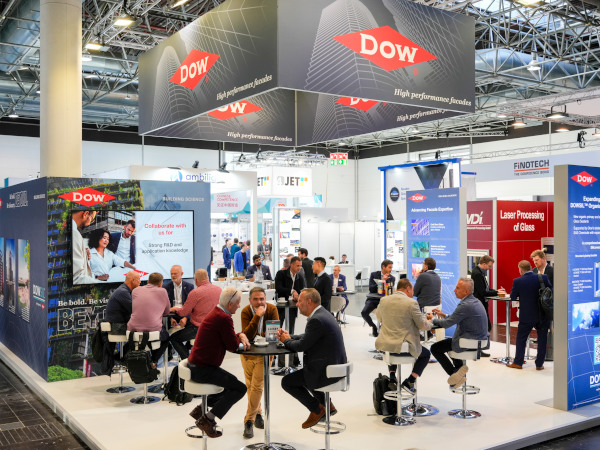Date: 4 August 2015
They offer a highly transparent, modern look to any building. With new technology currently available in the market, these systems have the ability to reach new heights with far less mechanical connections. Latest advances in engineering, and improvements in glass fabrication processes and equipment have allowed designers to push the boundaries of what structural glass systems could previously do, making them an excellent choice for your next tall, unsupported span curtain wall area.
In the 1990s and 2000s, most glass fin wall systems utilized ¾” tempered, monolithic vertical glass fins, hung from structure above, with mechanical bolt fitting connections like Pilkington 905 fittings or spider castings to anchor the face glass to the fins at every vertical joint. These Pilkington Planar™ systems performed well for high-span applications, having been fail-safe tested up to 40’-50’ tall without any progressive collapse issues. However, these fins required the use of anti-buckling cables to limit twist at greater heights. They also tended to be extremely deep, taking up over two to three foot of precious lobby/retail space at the base. Architects were looking for a solution for this design issue... they found it with Dupont SentryGlasⓇ interlayer laminated, tempered glass fins.
The main advantage of using Dupont SentryGlasⓇ interlayer laminated glass fins over tempered fins is to add the composite strength of two or three laminated glass lites in lieu of only a ¾” monolithic lite. It allows for shallower fin depths and additional resistance to buckling on spans greater than fifty feet tall without the use of the anti-buckling cables that would otherwise be required. The newest laminated tempered glass fin technology even allows for laminated fins by the European manufacturer Sedak to be produced over 40 feet tall in one piece without using mechanical stainless steel splices to connect smaller fins together! This technology does not come without it’s own set of challenges, however. Procurement, installation, and replacement can often be cost prohibitive on many projects. We recommend that you reach out to prospective vendors to check on manufacturers’ maximum fabrication sizing available, roller-wave distortion tolerances for flatness, bow and warp, edge finishing quality, and glass alignment tolerance to be certain the glass can be produced to the clients specified quality control levels and verify associated system costs to assure product expectations are met within budget.
There are a few potential concerns to be aware of when using laminated glass fins. These systems may seem thicker than monolithic fins when viewed from the inside on an angle or from directly behind...even with ultra-clear, low-iron glass. This perception can be attributed to the exposed edges of the laminate, which may not match up cleanly between multiple laminated plies and may have some offset. There may even be a slight noticeable color visible at the interlayer edge between the lites. During laminated glass processing, the interlayer fills the gap between laminated glass lites, often appearing closer to ⅜” instead of ¼” actual thickness. While the interlayer is clear, it will still be somewhat visible when exposed vertically on the back edge of the fin unless a cap is used to obscure the back edge. Hole sizes may also be oversized to allow for tolerance, which could be considered a visual imperfection in some cases.
In some low-rise structurally glazed glass mullion systems, additional silicone adhesion surface is required to bond the face glass to the fins that are being used instead of mechanical fasteners through holes. These often require triple-ply glass fins that create much larger visible silicone joints from the exterior that could be as thick 1.5” or more; that’s almost double the size of a typical monolithic fin joint. This may or may not be acceptable to the client, so we always recommend making visits to projects that have a similar designs to ensure overall system quality and visual aesthetics.
Still not sure about what may be the best option? W&W Glass is here to help with free design consultation and specification assistance to make sure you have exactly the right customized Pilkington Planar™ system for your next project. Be sure to visit our Pilkington Planar™ system website for our latest completed projects and stay connected on new projects and industry trends by joining our LinkedIn or signing up for our W&W Glass Facades e-newsletter.
W&W Glass LLC is a family owned business with a 70-year history in the metal and glass industry, one of the largest metal and glass companies in the New York metropolitan area and the largest supplier of structural glass systems in the country. W&W is the exclusive distributor of Pilkington Planar™ structural glass systems throughout North America to a network of qualified glazing partners for installation. We have over two decades of experience in the design and installation of various building enclosure systems, including stick-built curtain walls, pre-glazed unitized curtain walls, Pilkington Planar™ structural glass facades, and custom metal and glass enclosure systems. We install all of our work with our own dedicated union labor force. W&W is consistently the largest employer of glaziers in the NY metropolitan area.









Add new comment